The key return in a lopsided trade by the New York Rangers finally played a consequential role in their latest game. Unfortunately for the Blueshirts, they’ve been on the wrong side of that deal, and the key act by the player in question only benefited his team’s opponent.
Sammy Blais might have hit his Rangers low point in a 3-2 road loss to the Pittsburgh Penguins on Dec. 20, the forward turning in another ineffective performance for 5 minutes and 27 seconds before incurring a foolish penalty that led to Bryan Rust’s go-ahead power-play goal late in the second period. Blais, who retaliated along the boards after taking a hit in close proximity to the referee, then found himself nailed to the bench by coach Gerard Gallant for the entire third period.
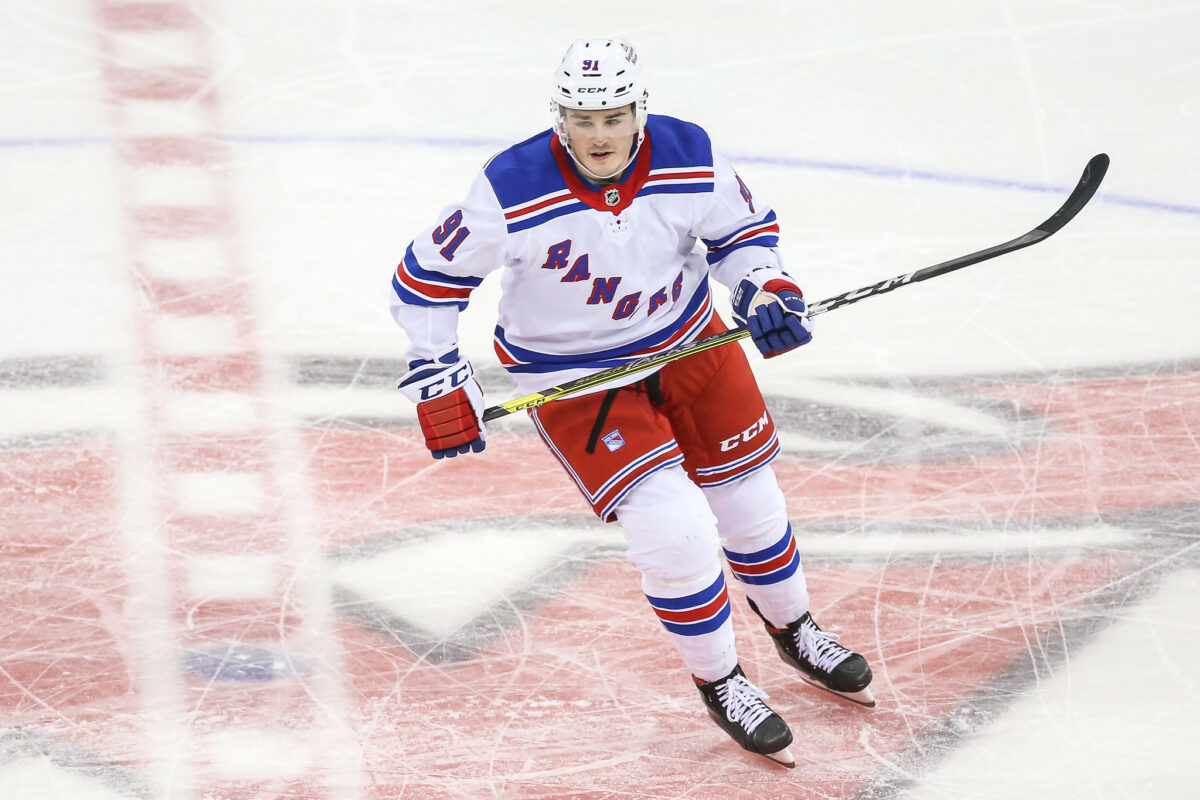
So it goes for Blais, a big, physical forward who hasn’t been the same since suffering a season-ending anterior cruciate ligament tear on a questionable hit by then-New Jersey Devils defenseman P.K. Subban on Nov. 14, 2021. Though the 26-year-old made it back this season, he’s been a shell of himself, the burst and strength that allowed him to deliver teeth-rattling checks and formidable work along the walls and in front of the net completely absent.
It’s a bad break for Blais, who’s been an upbeat and well-liked personality in the Rangers’ dressing room for the season-plus he’s been on Broadway. Time will tell whether he can ever return to the form that made him an effective bottom-six forward with the 2018-19 Stanley Cup champion St. Louis Blues, for whom he delivered 155 hits in 40 games, and then 103 in 36 contests the following season.
Blais Has Been a Shadow of Himself Since Getting Injured
Blais is on a similar pace as last season, having been credited with 100 hits in 30 games in 2022-23. Yet the impact, so to speak, just hasn’t been the same. Gallant saw there was a problem early on, when he opened training camp with Blais on the right side of the line featuring Chris Kreider and Mika Zibanejad – a role Blais briefly graduated to last season – before abandoning the experiment almost immediately when he realized Blais wasn’t right.
Nothing Blais has done since has served to disprove Gallant’s initial assessment. The winger seems invisible most nights in a fourth-line role, with two assists in his last 11 games and five total. Blais’ goal drought is becoming the stuff of minor legend, with his last regular-season tally coming May 1, 2021, in a 4-3 Blues overtime loss to the Minnesota Wild.
Adding to the pressure on the affable native of Montmagny, Quebec, is the fact that he’s carrying the weight of his current team’s ill-advised trade with his former club on his shoulders. Blais is all that remains from the Rangers’ trade of winger Pavel Buchnevich to the Blues on July 23, 2021, a deal made for salary-cap purposes but one that has nonetheless come back to bite them hard.
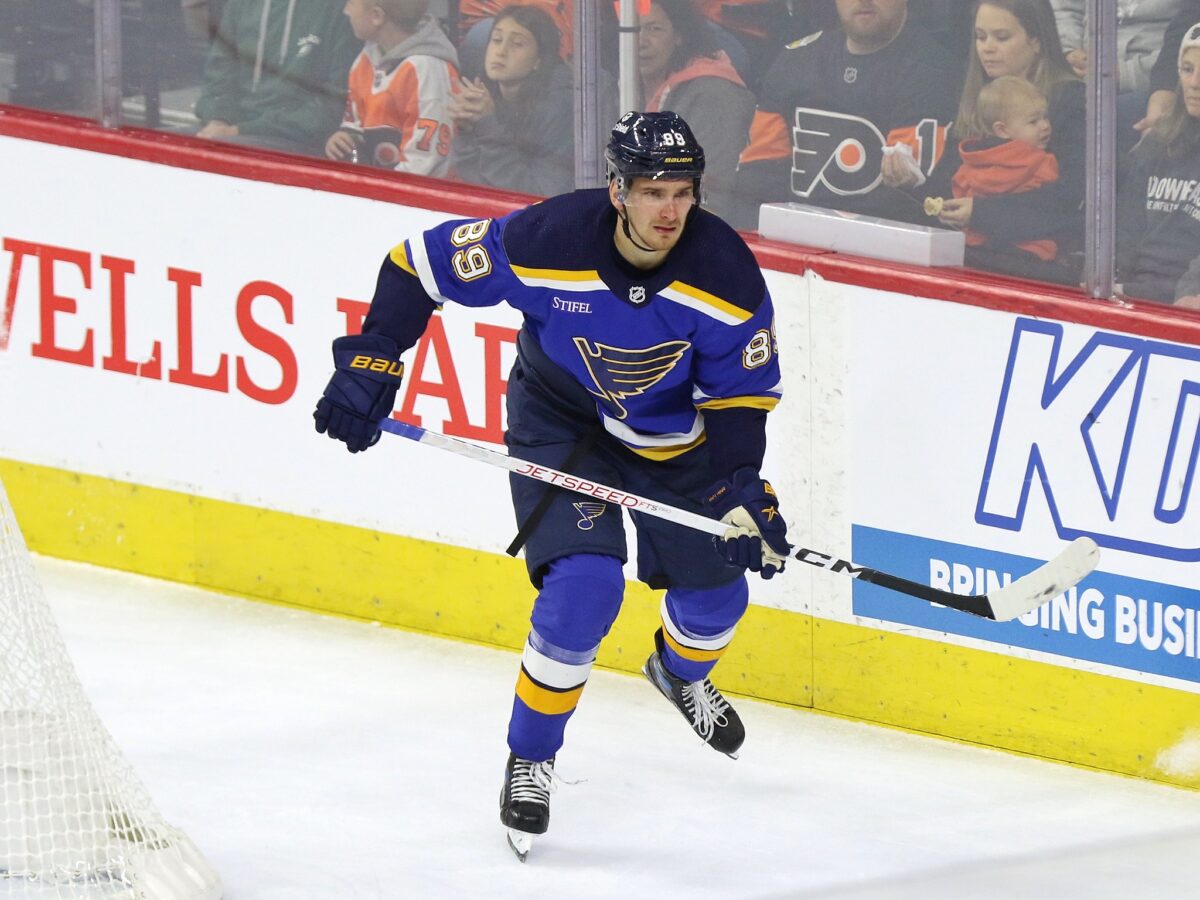
Buchnevich, the drafted-and-developed Ranger who after a breakout season in 2020-21 was deemed too expensive to re-sign by new general manager Chris Drury, has recorded 100 points in 97 games with the Blues. The second-round pick the Rangers received along with Blais in the deal is gone, sent to the Winnipeg Jets in the March trade-deadline swap that brought back Andrew Copp.
Blais was never going to match Buchnevich’s offensive production and all-around game, but was seen as having upside with the chance to become an effective power forward, the type of player the Rangers were desperate for at the time.
That reasoning hasn’t made it any easier for Rangers fans to digest the trade, which was likely doomed to be a bad one from the get-go and has morphed into a full-blown disaster as Buchnevich thrives in the Gateway City. Now, the moment when the Blueshirts need to make the deal get even worse for them to get better seems to be at hand.
As With Reaves, Removing Blais From Lineup Would Have Multiple Benefits
Simply put, it’s not working with Blais, whose future as a viable NHL player might be in doubt. The Rangers sent away another fourth-line forward in Ryan Reaves on Nov. 23, a move made partially to rid themselves of Reaves’ $1.75 million cap hit in order to accrue salary-cap space before the trade deadline.
That decision was supposedly an easy one, as it had also become apparent that Reaves’ skills had eroded and he wasn’t playing the same impactful role he did last season. Yet Reaves was still able to provide physicality, serve in his enforcer role and deliver his usual leadership and levity in the dressing room.
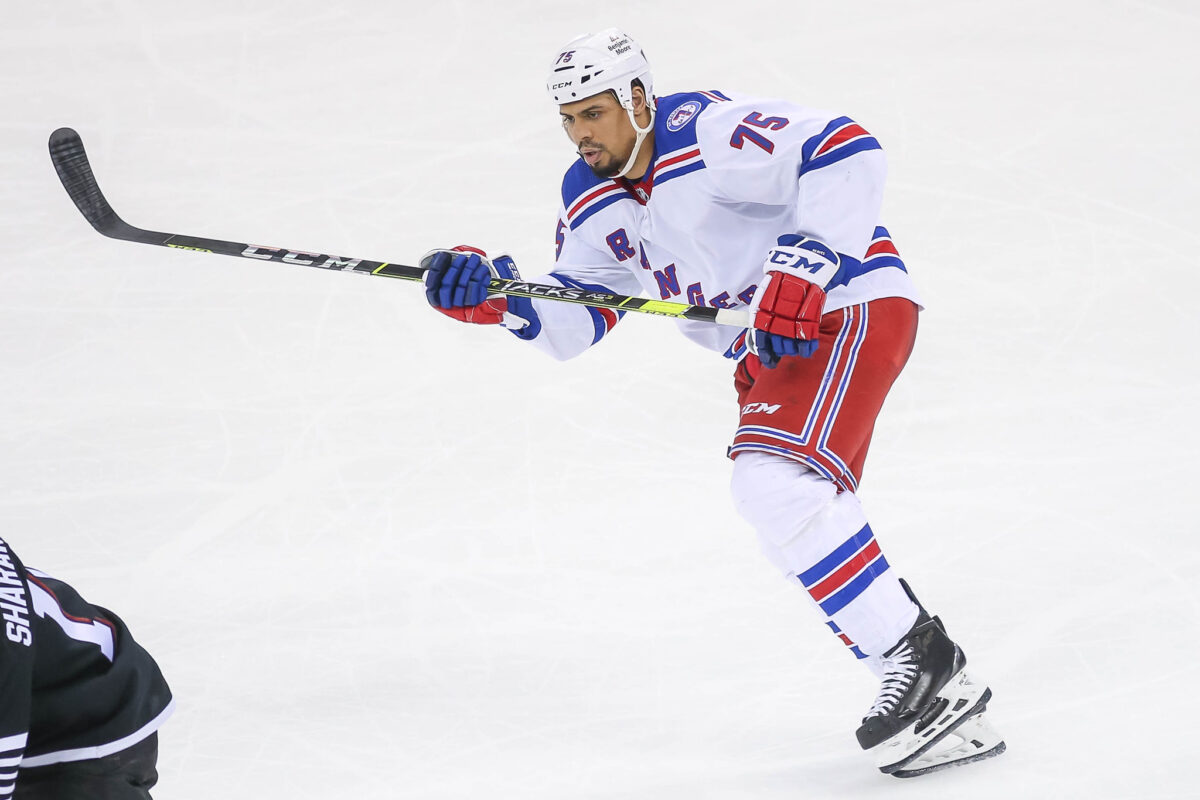
Management nonetheless determined that Reaves’ time was up and his salary slot would be better used for future upgrades to the roster. Though Blais’ underlying numbers are better than Reaves’ were, the course of action here should be just as clear, with Blais contributing even less than Reaves at a $1.525 million cap hit and unlikely to be re-signed as an unrestricted free agent next summer.
The moment to close the chapter of the Buchnevich trade debacle appears to have arrived. Blais’ bad penalty against the Penguins seemed to both channel and epitomize the frustration of his short tenure in a Blueshirt, which did begin with some promise last season as an excellent fit chemistry-wise and as someone who seemed on the cusp of taking the next step in his career with some promising play.
Related: Rangers’ Kravtsov & Gauthier Deserve More Opportunities
Now, the Rangers can’t justify keeping him in the lineup much longer. Julien Gauthier, the one spare forward on the roster, has contributed solid play and some offensive production when he’s gotten into the lineup, making him a much better option than Blais at this point. The best option, ironically, might be playing at Hartford of the American Hockey League, where Will Cuylle and Tim Gettinger, power left wings like Blais, could provide the Rangers with what Blais has been unable to this season.
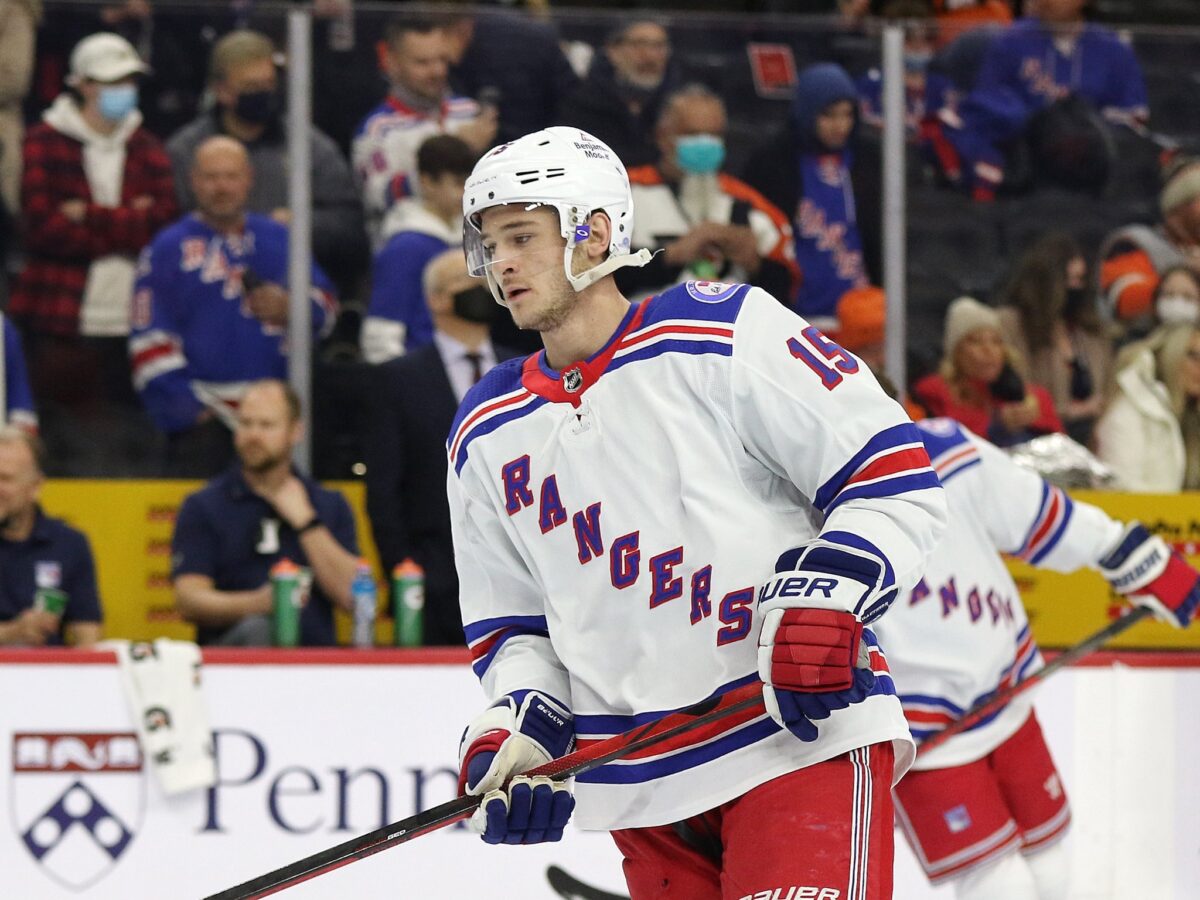
Cuylle was a second-round pick in 2020 and Gettinger brought size, physical play and strong forechecking in eight games with the big club last season. Yet even this seemingly easy path to bottom-six improvement isn’t realistically available, even with Gettinger’s NHL salary just $750,000 and Cuylle’s $842,500. The Rangers are carefully monitoring the precious deadline space for which they traded Reaves and pushed their roster down to 22, one shy of the maximum allowed.
A 23-man roster would cut further into the club’s cap space – currently at about $7.1 million by the deadline – on a daily basis. The Rangers ideally don’t want to carry two extra forwards, as the optimal utilization of that salary room would be to eventually upgrade the top six and possibly add a veteran defenseman, not to have to create a sort of insurance for Blais.
Rangers’ Salary Cap Makes Replacing Blais a Challenge
Calling someone up in the immediate future means the Rangers would likely need to clear Blais’ salary via trade, which might be a virtual impossibility. Few competitive teams would be willing or able to take on his cap hit for a diminished player, one that might not help much this season and who will be available as a UFA over the summer. The Rangers could try to go the Arizona Coyotes trade route again as they did with Patrik Nemeth last offseason, when they attached a pair of second-round picks (one conditional) to Nemeth to send his contract to the desert.
The Coyotes, though, have acquired a wealth of higher draft choices as the price of serving as a dumping ground for bad deals. It seems doubtful the Rangers would want to part with another higher-round pick just to rid themselves of Blais’ contract.
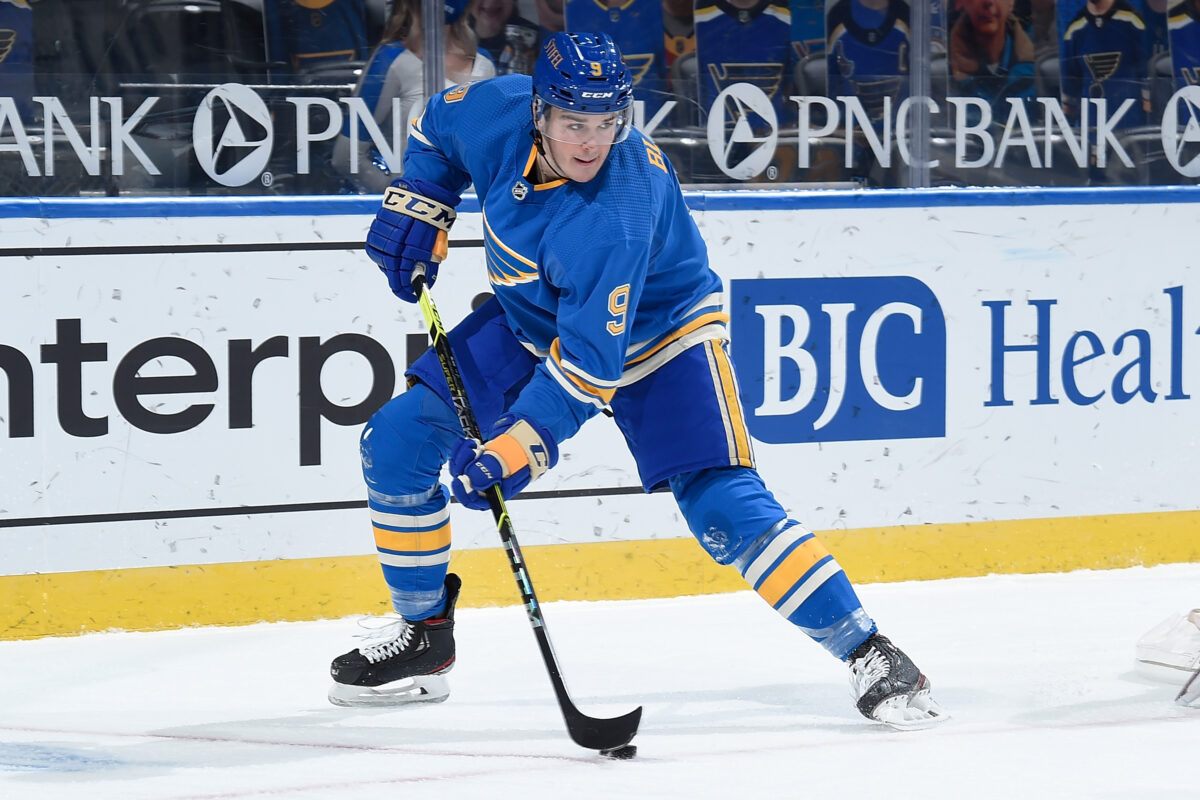
The front office might not be able to bring itself to trade Blais anyway, which would make official the fact that they’d be left with nothing from dealing away a point-per-game player just 17 months ago. Yet the hard truth is that the club isn’t getting anything from that swap as it is. Removing Blais from the equation appears necessary. Like Reaves, his roster spot will best benefit the team in the hands of someone else. If the Rangers can subtract his cap hit as well, all the better.
Unless Blais suddenly begins to regain his form, this would seem to represent a sad end to the worst personnel move of Drury’s tenure. It also seems to be the only course of action if the Blueshirts want to create their best possible roster for the rest of 2022-23.